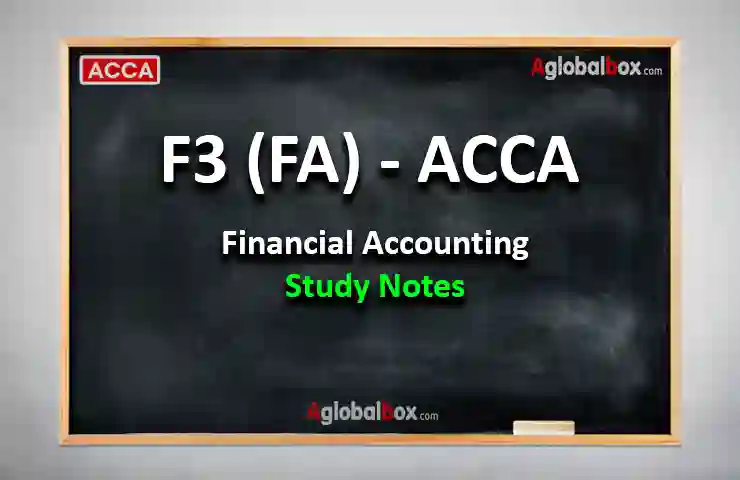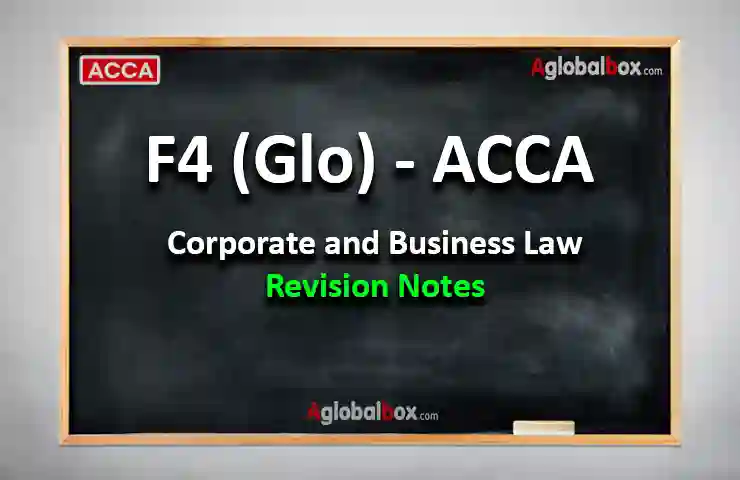These are ACCA F9 (FM) Financial Management Part-C of the Syllabus “Working capital management” .
These multiple-choice questions (MCQs) are designed to help ACCA F9 students to better understand the exam format. We aim to instill in students the habit of practicing online for their CBE exams . By doing so, students can reduce exam stress and prepare more effectively.
Please note:
Students should not attempt these MCQs until they have finished the entire chapter.
All questions are compulsory, so please do not skip any.
We hope that these MCQs will be a valuable resource for students preparing for the ACCA F9 (FM) exam .
Course: ACCC – Association of Chartered Certified Accountants Fundamental Level: Applied Skills Subject: Financial Management Paper: F9 – FR Chapter and Topic The nature, elements and importance of working capital, Management of inventories, accounts receivable, accounts payable and cash, Determining working capital needs and funding strategies Questions: PKA Co Plot Co Gorwa Co Cat Co Syllabus Area: C – “Working capital management” Questions Type: CBE MCQs Exam Section: Section A
Syllabus Area
These Multiple Choice Questions (MCQs) cover the Syllabus Area Part C of the Syllabus; “Working capital management” of ACCA F9 (FM) Financial Management Module.
Time
These MCQs are not time-bound. Take your time and solve them without stress. Pay proper attention and focus. Do not rush or hesitate
Result
Students will get their F9 CBE MCQs Test results after they finish the entire test. They will also be able to see the correct and incorrect answers, as well as explanations for the incorrect questions.
Types of Questions
MCQs: Choose one from the given options. Multiple choice: Choose all those answers which seem correct/ or incorrect to you, as per the requirement of the question. Keep your eye on the wording “(select all those which are correct/ or incorrect) “. Drop-down: Select from the list provided. Type numbers: Type your answer in numbers as per the requirement of the question.
QUESTION – PKA Co – (01/04)
QUESTION – Plot Co – (02/04)
F9 (FM) - Part C - MCQs - Plot Co
Course: ACCA - Association of Chartered Certified AccountantsSyllabus Area: C - Working capital managementChapter: 04 Working capital, 05 Managing working capital, 06 Working capital financeExam Section: Section BQuestion Name: Plot CoQuestions type: MCQsTime: No Time Limit
INSTRUCTIONS
If you are using mobile, turn on the mobile rotation and solve the MCQs on wide screen for better experience.
REQUEST
Please rate the quiz and give us feedback once you completed the quiz.
Share with ACCA students on social media such as, Facebook Groups, Whatsapp, Telegram, etc.
1 / 5
The following scenario relates to questions 1–5.
CASE SCENARIO
Plot Co sells Product P with sales occurring evenly throughout the year.
Product P
The annual demand for Product P is 300,000 units and an order for new inventory is placed each month. Each order costs $267 to place. The cost of holding Product P in inventory is 10 cents per unit per year. Buffer inventory equal to 40% of one month's sales is maintained.
Other information
Plot Co finances working capital with short-term finance costing 5% per year. Assume that there are 365 days in each year.
REQUIREMENT
If Plot Co were overtrading, which TWO of the following could be symptoms?
2 / 5
The following scenario relates to questions 1–5.
CASE SCENARIO
Plot Co sells Product P with sales occurring evenly throughout the year.
Product P
The annual demand for Product P is 300,000 units and an order for new inventory is placed each month. Each order costs $267 to place. The cost of holding Product P in inventory is 10 cents per unit per year. Buffer inventory equal to 40% of one month's sales is maintained.
Other information
Plot Co finances working capital with short-term finance costing 5% per year. Assume that there are 365 days in each year.
REQUIREMENT
Plot Co managers are considering the cost of working capital management.
Which of the following statements about working capital management are True ?
A conservative working capital finance approach is low risk but expensive.
Good working capital management adds to the wealth of shareholders.
3 / 5
The following scenario relates to questions 1–5.
CASE SCENARIO
Plot Co sells Product P with sales occurring evenly throughout the year.
Product P
The annual demand for Product P is 300,000 units and an order for new inventory is placed each month. Each order costs $267 to place. The cost of holding Product P in inventory is 10 cents per unit per year. Buffer inventory equal to 40% of one month's sales is maintained.
Other information
Plot Co finances working capital with short-term finance costing 5% per year. Assume that there are 365 days in each year.
REQUIREMENT
Plot Co is considering offering a 2% early settlement discount to its Currently sales are $10m and customers take 60 days to pay. Plot Co estimates half the customers will take up the discount and pay cash. Plot is currently financing working capital using an overdraft on which it pays a 10% charge. Assume 365 days in a year.
What will be the effect of implementing the policy?
4 / 5
The following scenario relates to questions 1–5.
CASE SCENARIO
Plot Co sells Product P with sales occurring evenly throughout the year.
Product P
The annual demand for Product P is 300,000 units and an order for new inventory is placed each month. Each order costs $267 to place. The cost of holding Product P in inventory is 10 cents per unit per year. Buffer inventory equal to 40% of one month's sales is maintained.
Other information
Plot Co finances working capital with short-term finance costing 5% per year. Assume that there are 365 days in each year.
REQUIREMENT
What is the total annual cost of a policy based on using the economic order quantity (EOQ)? (to the nearest $100)
$______
5 / 5
The following scenario relates to questions 1–5.
CASE SCENARIO
Plot Co sells Product P with sales occurring evenly throughout the year.
Product P
The annual demand for Product P is 300,000 units and an order for new inventory is placed each month. Each order costs $267 to place. The cost of holding Product P in inventory is 10 cents per unit per year. Buffer inventory equal to 40% of one month's sales is maintained.
Other information
Plot Co finances working capital with short-term finance costing 5% per year. Assume that there are 365 days in each year.
REQUIREMENT
What is the total annual cost of the current purchasing policy? (to the nearest whole number)
$_____
QUESTION – Gorwa Co – (03/04)
F9 (FM) - Part C - MCQs - Gorwa Co
Course: ACCA - Association of Chartered Certified AccountantsSyllabus Area: C - Working capital managementChapter: 04 Working capital, 05 Managing working capital, 06 Working capital financeExam Section: Section BQuestion Name: Gorwa CoQuestions type: MCQsTime: No Time Limit
INSTRUCTIONS
If you are using mobile, turn on the mobile rotation and solve the MCQs on wide screen for better experience.
REQUEST
Please rate the quiz and give us feedback once you completed the quiz.
Share with ACCA students on social media such as, Facebook Groups, Whatsapp, Telegram, etc.
1 / 5
The following scenario relates to questions 1–5.
CASE SCENARIO
The financial manager of Gorwa Co is worried about the level of working capital and that the company may be overtrading.
The following extract financial information relates to the last two years:
20X7 20X6
Sales (all on credit)
37,400
26,720
Cost of sales
(34,408)
(23,781)
Operating profit
2,992
2,939
20X7 20X6
$'000
$'000
$'000
$'000
Current assets
Inventory
4,600
2,400
Trade receivables
4,600 2,200
9200
4,600
Current liabilities
7,975
3,600
REQUIREMENT
Gorwa Co's net working capital (ie current assets less current liabilities) is most likely to increase in which of the following situations?
2 / 5
The following scenario relates to questions 1–5.
CASE SCENARIO
The financial manager of Gorwa Co is worried about the level of working capital and that the company may be overtrading.
The following extract financial information relates to the last two years:
20X7 20X6
Sales (all on credit)
37,400
26,720
Cost of sales
(34,408)
(23,781)
Operating profit
2,992
2,939
20X7 20X6
$'000
$'000
$'000
$'000
Current assets
Inventory
4,600
2,400
Trade receivables
4,600 2,200
9200
4,600
Current liabilities
7,975
3,600
REQUIREMENT
Gorwa Co is concerned about overtrading.
Which TWO of the following are symptoms of overtrading?
3 / 5
The following scenario relates to questions 1–5.
CASE SCENARIO
The financial manager of Gorwa Co is worried about the level of working capital and that the company may be overtrading.
The following extract financial information relates to the last two years:
20X7 20X6
Sales (all on credit)
37,400
26,720
Cost of sales
(34,408)
(23,781)
Operating profit
2,992
2,939
20X7 20X6
$'000
$'000
$'000
$'000
Current assets
Inventory
4,600
2,400
Trade receivables
4,600 2,200
9200
4,600
Current liabilities
7,975
3,600
REQUIREMENT
Which of the following statements are FALSE for Gorwa Co?
4 / 5
The following scenario relates to questions 1–5.
CASE SCENARIO
The financial manager of Gorwa Co is worried about the level of working capital and that the company may be overtrading.
The following extract financial information relates to the last two years:
20X7 20X6
Sales (all on credit)
37,400
26,720
Cost of sales
(34,408)
(23,781)
Operating profit
2,992
2,939
20X7 20X6
$'000
$'000
$'000
$'000
Current assets
Inventory
4,600
2,400
Trade receivables
4,600 2,200
9200
4,600
Current liabilities
7,975
3,600
REQUIREMENT
What is the increase in inventory days between 20X6 and 20X7? (to the nearest whole day)
______ days
5 / 5
The following scenario relates to questions 1–5.
CASE SCENARIO
The financial manager of Gorwa Co is worried about the level of working capital and that the company may be overtrading.
The following extract financial information relates to the last two years:
20X7 20X6
Sales (all on credit)
37,400
26,720
Cost of sales
(34,408)
(23,781)
Operating profit
2,992
2,939
20X7 20X6
$'000
$'000
$'000
$'000
Current assets
Inventory
4,600
2,400
Trade receivables
4,600 2,200
9200
4,600
Current liabilities
7,975
3,600
REQUIREMENT
What is the sales/net working capital ratio for 20X7? (to two decimal places)
_____ times
QUESTION – Cat Co – (04/04)
F9 (FM) - Part C - MCQs - Cat Co
Course: ACCA - Association of Chartered Certified AccountantsSyllabus Area: C - Working capital managementChapter: 04 Working capital, 05 Managing working capital, 06 Working capital financeExam Section: Section BQuestion Name: Cat CoQuestions type: MCQsTime: No Time Limit
INSTRUCTIONS
If you are using mobile, turn on the mobile rotation and solve the MCQs on wide screen for better experience.
REQUEST
Please rate the quiz and give us feedback once you completed the quiz.
Share with ACCA students on social media such as, Facebook Groups, Whatsapp, Telegram, etc.
1 / 5
The following scenario relates to questions 1–5.
CASE SCENARIO
Cat Co places monthly orders with a supplier for 10,000 components which are used in its manufacturing processes. Annual demand is 120,000 components. The current terms are payment in full within 90 days, which Cat Co meets, and the cost per component is $7.50. The cost of ordering is $200 per order, while the cost of holding components in inventory is $1.00 per component per year.
The supplier has offered a discount of 3.6% on orders of 30,000 or more components. If the bulk purchase discount is taken, the cost of holding components in inventory would increase to $2.20 per component per year due to the need for a larger storage facility.
REQUIREMENT
Management at Cat Co are considering an aggressive approach to financing working capital.
Which of the following statements relate to an aggressive approach to financing working capital management?
All non-current assets, permanent current assets and part of fluctuating current assets are financed by long-term funding.
There is an increased risk of liquidity and cash flow problems.
2 / 5
The following scenario relates to questions 1–5.
CASE SCENARIO
Cat Co places monthly orders with a supplier for 10,000 components which are used in its manufacturing processes. Annual demand is 120,000 components. The current terms are payment in full within 90 days, which Cat Co meets, and the cost per component is $7.50. The cost of ordering is $200 per order, while the cost of holding components in inventory is $1.00 per component per year.
The supplier has offered a discount of 3.6% on orders of 30,000 or more components. If the bulk purchase discount is taken, the cost of holding components in inventory would increase to $2.20 per component per year due to the need for a larger storage facility.
REQUIREMENT
Cat Co is reviewing its working capital management.
Which TWO of the following statements concerning working capital management are correct?
3 / 5
The following scenario relates to questions 1–5.
CASE SCENARIO
Cat Co places monthly orders with a supplier for 10,000 components which are used in its manufacturing processes. Annual demand is 120,000 components. The current terms are payment in full within 90 days, which Cat Co meets, and the cost per component is $7.50. The cost of ordering is $200 per order, while the cost of holding components in inventory is $1.00 per component per year.
The supplier has offered a discount of 3.6% on orders of 30,000 or more components. If the bulk purchase discount is taken, the cost of holding components in inventory would increase to $2.20 per component per year due to the need for a larger storage facility.
REQUIREMENT
Cat Co has annual credit sales of $25m and accounts receivable of $5m. Working capital is financed by an overdraft at 10% interest per Assume 365 days in a year.
What is the annual finance cost saving if Cat Co reduces the collection period to 60 days? (to the nearest whole number)
4 / 5
The following scenario relates to questions 1–5.
CASE SCENARIO
Cat Co places monthly orders with a supplier for 10,000 components which are used in its manufacturing processes. Annual demand is 120,000 components. The current terms are payment in full within 90 days, which Cat Co meets, and the cost per component is $7.50. The cost of ordering is $200 per order, while the cost of holding components in inventory is $1.00 per component per year.
The supplier has offered a discount of 3.6% on orders of 30,000 or more components. If the bulk purchase discount is taken, the cost of holding components in inventory would increase to $2.20 per component per year due to the need for a larger storage facility.
REQUIREMENT
What is the total annual inventory cost if Cat Co orders 30,000 components at a time?
5 / 5
The following scenario relates to questions 1–5.
CASE SCENARIO
Cat Co places monthly orders with a supplier for 10,000 components which are used in its manufacturing processes. Annual demand is 120,000 components. The current terms are payment in full within 90 days, which Cat Co meets, and the cost per component is $7.50. The cost of ordering is $200 per order, while the cost of holding components in inventory is $1.00 per component per year.
The supplier has offered a discount of 3.6% on orders of 30,000 or more components. If the bulk purchase discount is taken, the cost of holding components in inventory would increase to $2.20 per component per year due to the need for a larger storage facility.
REQUIREMENT
What is the current total annual cost of inventory?













